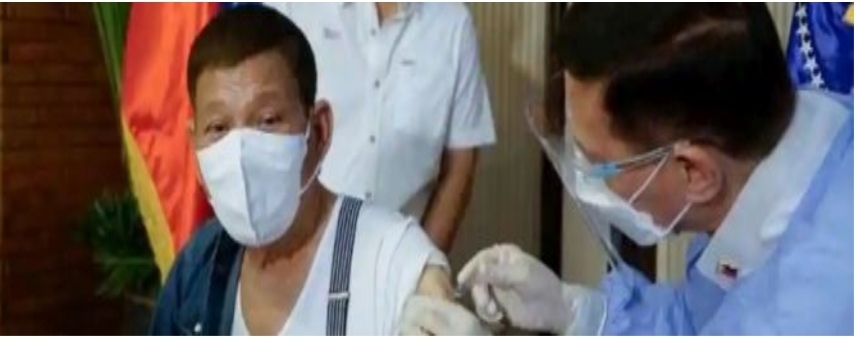Grappling With COVID – 19, Philippines To Send Back China’s Sinopharm Vaccine

Philippine President Rodrigo Duterte (L) receiving a dose of China’s Sinopharm
While Philippine regulators had previously given emergency use approval to the Chinese vaccine Sinovac in February, the other vaccine Sinopharm waits for approval
The president of the Philippines has asked China to take back 1,000 doses of Sinopharm vaccine donated to the country after facing criticism for receiving a jab even though it has not yet been authorised for public use in the country.
On Monday, Philippine President Rodrigo Duterte had the health secretary take the China-made Sinopharm vaccine as a method of encouraging his reluctant citizens to get inoculated and help stop the transmission of the coronavirus.
An unspecified number of Duterte’s guards have also reportedly been injected with the Sinopharm vaccine in secrecy.
The Philippine authorities are reportedly waiting for the vaccine to get approved by a “stringent regulatory authority,” such as WHO. While Philippine regulators had previously given emergency use approval to the Chinese vaccine Sinovac in February, the other vaccine Sinopharm awaits approval.
China has given emergency approval to five of its domestically made vaccines but is still awaiting approval from the World Health Organisation for its top two vaccines – Sinopharm and Sinovac.
On May 3, the WHO in a press conference had said that they expect both the Chinese vaccines Sinopharm and Sinovac’s approval to be finalised by the end of this week.
A WHO endorsement can significantly boost confidence in the Chinese vaccines, which have long faced concerns about a lack of transparency regarding clinical trial data and their efficacy rates.
Even before receiving a nod from WHO, China has reportedly donated the vaccine to around 60 countries and using these two vaccines has vaccinated 200 million people at home.
The Southeast Asian country is battling one of the worst coronavirus outbreaks in Asia with more than a million infections, including those caused by variants first detected in Britain and South Africa, and more than 18,000 deaths.




